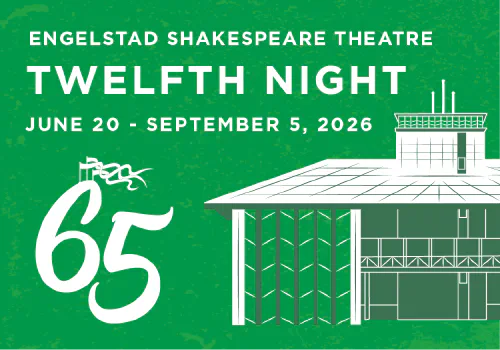By Heidi Madsen
In the words of Aristotle, “a man may wrong his enemies because that is pleasant; [but] he may equally wrong his friends because that is easy” (Rhetoric 1373, 3-5). However important the who and the how are to a story, it is the endlessly seductive why that is most imperative. Anyone may commit a crime; but it is the often hidden aspects of a situation, the psychological motivations behind the action, that are so complex and powerful. As Brian Boyd points out, this information catches our attention not out of some idle or even morbid curiosity, but because it is so strategic to our survival; “we need to understand the psychology of our adversaries,” because a predator can just as easily take the form of friend or foe (On The Origin of Stories; Evolution, Cognition, and Fiction [Cambridge Massachusetts: The Belknap Press of Harvard University Press, 2009] 281).
Though happily married for half a century, playwright Frederick Knott wrote two successful stage thrillers about husbands who put their wives in mortal peril—with one important difference: in Wait until Dark, the husband endangers his wife unknowingly; in Dial M for Murder the husband truly wants his wife dead. This husband, Tony Wendice, knows of his wife Margo’s attachment to another man; and, yet, his gruesome plan is not a lover’s crime of passion. In fact, if one were to classify Dial M for Murder as one of Georges Polti’s thirty-six dramatic plots, it would not be Murderous Adultery, or even An Enemy Loved, but most fittingly that bold number nine: Daring Enterprise.
Dial M for Murder is intricately plotted “with the deadly accuracy of a stroke in a championship tournament;” but, much of the character and story development occur in the back-story even before the opening scene (Evans, Maurice qtd. in The Independent, “Frederick Knott,” Thursday December 26, 2002, http://www.independent, co.uk/news/obituaries/Frederick-knott-612029.html). A retired tennis champion, Tony is accustomed to fanfare and posh living, but the salary for any professional athlete in the 1950s was not as sizable as it is today. Tony’s plan, then, is to “snap up” one of his female fans with a large bank account; he almost ties the knot with “a tubby Boston deb with five million dollars [but] finally settles for Margo and her ninety thousand pounds (18). The couple may have lived happily ever after, except that while Tony is away playing the grass courts in America, Margo falls for Max Halliday—a crime writer for an American weekly television series. Tony begins to worry what will happen if Margo leaves him. He agonizes, “All of these expensive tastes I’d acquired while I was at the top . . . big tennis had finished with me—and so, apparently, had my wife” (20).
According to Carolyn Wheat all of the basic ingredients of suspense fiction are found in the Fairy Tale. The hero, or heroine as is the case here, takes a journey which involves tests, enemies—even a brush with death. “Snow White tames the huntsman whose mission it is to kill her . . . and Gretel passes the ultimate test when she tosses the old witch into her own oven” (How To Write Killer Fiction [Santa Barbara, California: John Daniel & Company, 2003], 98). Not unlike these gentle maidens who possess no formal skills of defense, Margo Wendice will need to improvise in order to survive. On her journey she will face a type of huntsman (Captain Lesgate, aka Charles Alexander Swann, who was at Cambridge with Tony), engage in a deadly contest with a scarf and a pair of scissors, endure imprisonment and prosecution, and learn of Tony’s treachery. Fortunately for Margo, in fairy tales “people or things that at first seem insignificant or powerless, can become the best friend a hero or heroine ever had” (Wheat, 101). Her old friend Max is visiting from the States.
Though Frederick Knott could not have anticipated the modern day obsession with dramatized forensics and criminal profiling, his character Max Halliday is a 1950s pioneer in the experimental world of television murder mystery. On paper, Max “kills” one person per week—deciding who, how, and why by randomly drawing from three corresponding hats. Max is no professional detective like Holmes or Perot, but he does sort through crime scene potpourri like a player in a game of Clue, and criminal combinations such as Mrs. Peacock, in the library with a candlestick are his area of expertise. He believes in the perfect murder—on paper. “And I think I could plan one better than most people,” he innocently brags to Tony on the evening of the planned murder, “but I doubt if I could carry it out” (32). Why? “Because in stories things turn out as the author plans them to. . . . In real life they don’t—always” (32).
Frederick Knott’s debut play Dial M for Murder opened in London in the summer of 1952, and in New York a few months later with slight changes to the script (for example, the M in the title referred to a British phone exchange which would be meaningless to an American audience). It was performed in thirty countries, and in 1954, a screen version adapted by Knott and directed by Alfred Hitchcock was released. Such an unemotional study of the art of murder and the darker impulses which motivate one human to harm another seems tailor-made for Hitchcock.
Additional motifs that may have attracted the great director to this work include characters who play tennis and swirl brandy; but, one of the most “Hitchcockian” features in Knott’s play is the staircase—a symbol employed in German expressionism to denote emotional identity, or the landscape of the mind. A disciple of expressionist film, Hitchcock used the staircase to illustrate different emotions, to heighten suspense, and to convey movement either toward or away from danger. In Dial M for Murder, it is the place (on the fifth step) where Tony hides the key to his apartment and it is a crucial site of plot reversal and recognition.
Up until the moment of the awful death scene, the audience knows that Tony is in control and that Margo has little chance of survival; we watch even as Tony listens to the sounds of the horrid struggle, and then her choking voice in the phone; Margo is not dead. What makes Dial M for Murder so compelling is not the fact that a man carries out a plot to murder his wife, but because when everything in his seemingly perfect plan A fails, he is nearly able to extemporize his way to freedom with a brilliant plan B. As he asks himself “Well, what do I do next?” Tony’s composure and cleverness are so great that an audience might even begin to overlook his faults and cheer on his escape; but he never truly develops into a likable villain, or even a bad guy we love to hate such as Count Fesco from Wilkie Collins’ great detective story The Woman in White, or the admirably terrifying Mrs. Danvers in Rebecca. It is not too disappointing, then, when Margo and Max—with some help from Inspector Hubbard of Scotland Yard—manage in the end to “push Tony into his own fire.”










